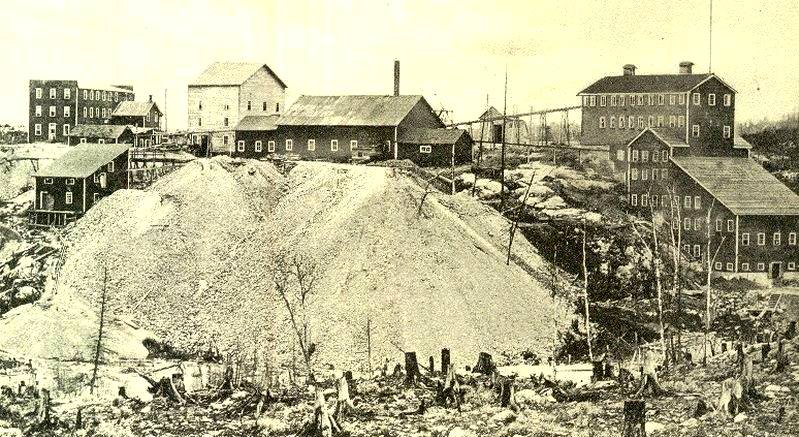Integrating Hudson's Bay Artifacts Into Manitoba's Historical Record

Table of Contents
The Significance of Hudson's Bay Artifacts in Manitoba's Narrative
Hudson's Bay artifacts are invaluable primary sources for understanding Manitoba's multifaceted history. They offer tangible connections to the past, illuminating various aspects of the province's development, from early trade networks to Indigenous relations and the evolving economic landscape. These artifacts provide crucial context for understanding the complexities of Manitoba's past.
-
Artifacts as primary sources for understanding fur trade practices: Items such as trade goods (guns, blankets, beads), tools (axes, traps), and accounting ledgers reveal the intricacies of the fur trade, its economic impact, and the relationships between the HBC, Indigenous peoples, and European settlers. Examination of these artifacts allows historians to paint a more vivid picture of this pivotal period.
-
Revealing Indigenous perspectives and interactions through material culture: Indigenous-made items, and those bearing the traces of Indigenous use, offer insights into cultural practices, technologies, and interactions with the HBC. Studying these artifacts helps to counterbalance Eurocentric narratives and provide a more complete understanding of the historical experience. Examples include beadwork, clothing, and tools.
-
Illustrating the evolution of settlements and economic systems: Artifacts associated with HBC trading posts and settlements—such as building materials, tools, and household items—reveal how these settlements developed and impacted the environment. They also show the transition from a fur-trade based economy to other forms of economic activity.
-
Showcasing the impact of HBC on the environment and landscape: Artifacts can illustrate the environmental consequences of the fur trade, such as depletion of certain animal populations and changes in land use. Studying these effects provides a crucial perspective on the long-term effects of human activity on Manitoba's environment. The Manitoba Museum and the Canadian Museum of History hold significant collections relevant to this aspect.
Challenges in Preserving and Accessing Hudson's Bay Artifacts
Preserving and making Hudson's Bay artifacts accessible presents significant challenges. The age and fragility of many items, coupled with limited resources, pose considerable obstacles to their long-term preservation and the study of Manitoba's history.
-
Conservation challenges: Many artifacts suffer from deterioration due to age, exposure to environmental factors (light, temperature, humidity), and past improper storage techniques. Conservation requires specialized expertise and resources. Proper archival practices and environmental control are essential to mitigate further damage.
-
Issues with cataloging and documentation of collections: Inconsistent cataloging and lack of comprehensive documentation hinder research and access to information about specific artifacts. Standardizing cataloging practices and creating accessible databases are vital steps to improve researchers' access.
-
Limited funding for preservation and digitization projects: Preservation and digitization are costly undertakings, requiring substantial funding for conservation treatments, database creation, and staffing. Securing sustainable funding mechanisms is essential for long-term preservation efforts.
-
Balancing preservation with public access and educational opportunities: Finding a balance between protecting fragile artifacts and providing opportunities for public engagement and education requires careful planning and innovative strategies. This often includes the creation of high-quality reproductions or digital surrogates to allow for easier access.
Integrating Artifacts into Educational and Public Outreach Initiatives
Making Hudson's Bay artifacts accessible to the public and utilizing them for educational purposes is essential for fostering a deeper understanding of Manitoba's history. This requires innovative approaches to public engagement and education.
-
Developing museum exhibits and educational programs: Engaging and informative museum exhibits, coupled with tailored educational programs for various age groups, can bring the stories behind these artifacts to life. Interactive displays and hands-on activities enhance the learning experience.
-
Creating online databases and virtual tours: Digital technologies provide opportunities to make artifacts accessible to a wider audience, regardless of geographical location. Online databases with high-resolution images and detailed descriptions allow researchers and the public to explore these collections virtually.
-
Engaging Indigenous communities in the interpretation and presentation of artifacts: Involving Indigenous communities in the interpretation and presentation of artifacts is crucial for providing diverse perspectives and ensuring respectful representation of their cultural heritage. Collaboration with Indigenous communities is paramount.
-
Promoting citizen science and community-based archival projects: Engaging the public in citizen science initiatives, such as transcribing historical documents or assisting with cataloging, fosters a sense of ownership and participation in preserving Manitoba's history.
The Role of Digital Technology in Preserving and Sharing Hudson's Bay Artifacts
Digital technology offers powerful tools for overcoming the challenges of physical access and preservation of Hudson's Bay artifacts.
-
3D scanning and modeling of artifacts: 3D scanning creates digital replicas, allowing researchers and the public to examine artifacts remotely without risking damage to the originals. This technology enables detailed study and preservation.
-
Creating online catalogs and searchable databases: Digital catalogs and databases make vast collections accessible to researchers and the public worldwide, facilitating research and educational opportunities. These tools make searching and filtering data incredibly easy.
-
Developing virtual reality experiences: Immersive virtual reality experiences can transport viewers to historical settings, allowing them to interact with artifacts and experience the past in a new way. Virtual reality is transforming how museums present history.
-
Utilizing social media for public engagement: Social media platforms provide channels to share information about Hudson's Bay artifacts, engage the public in discussions, and promote educational initiatives, thus widening the reach of these historically important pieces.
Conclusion
The integration of Hudson's Bay artifacts into Manitoba's historical record is a crucial endeavor, vital for a complete understanding of the province's past. Overcoming the challenges of preservation and access requires collaborative efforts between museums, archives, researchers, and Indigenous communities. By embracing innovative technologies and engaging the public through educational initiatives, we can ensure that these significant artifacts continue to tell their stories and enrich our understanding of Manitoba's history. Let's continue working together to preserve and promote the rich legacy represented by Hudson's Bay artifacts in Manitoba's historical narrative. Further research and collaboration on preserving Hudson's Bay artifacts are encouraged. The preservation of these artifacts is not just about the past, it is an investment in our collective future.

Featured Posts
-
 Eurovisions Pride Flag Ban A Deeper Look
May 01, 2025
Eurovisions Pride Flag Ban A Deeper Look
May 01, 2025 -
 Australias Eurovision 2024 Hosts Revealed Courtney Act And Tony Armstrong
May 01, 2025
Australias Eurovision 2024 Hosts Revealed Courtney Act And Tony Armstrong
May 01, 2025 -
 Six Nations 2025 Can Scotland Consistently Compete
May 01, 2025
Six Nations 2025 Can Scotland Consistently Compete
May 01, 2025 -
 Bibee Guardians Defeat Judge Yankees In 3 2 Thriller
May 01, 2025
Bibee Guardians Defeat Judge Yankees In 3 2 Thriller
May 01, 2025 -
 Cay Fest On Film Splice Exploring The Creative Process
May 01, 2025
Cay Fest On Film Splice Exploring The Creative Process
May 01, 2025
